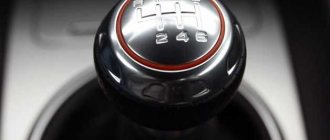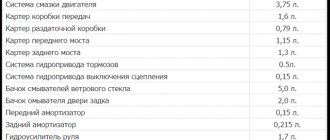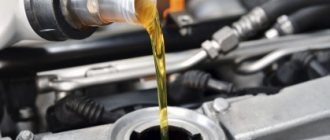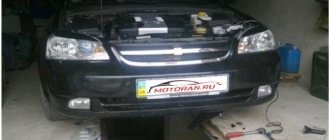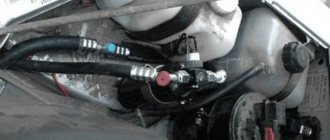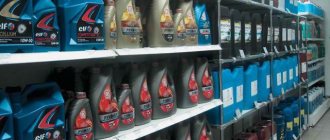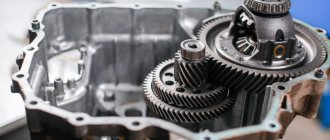In modern automotive technology, three main types of lubricating fluids are used: motor, transmission and hydraulic oil. Transmission fluids have a service life at the end of which they need to be replaced. Some manufacturers make manual transmissions maintenance-free, but the lubricant is still replaced depending on operating conditions. One of these products is synthetic ZIC G-FF 75W85 GL-4.
Product Description
ZIC 75W85 is a special product for mechanical transmissions, where it is recommended to use GL-4 class fluids. The composition contains polyalphaolefin components, components based on synthetic raw materials, as well as high quality additives from the manufacturer LUBRIZOL. The base is obtained by processing natural gas.
ZIC GFF 75W85 contains additives that prevent premature wear and also reliably protect metal surfaces from corrosion and rusting. As a result of timely replacement of the transmission product, the car owner will be able to extend the life of the gearbox. Yubase's own product is used as a base oil; it differs from analogues in its purity and technical characteristics.
A high-quality base allows liquids to withstand increased loads, and also significantly extends the life of the product. During operation it does not destroy parts made of non-ferrous metals. Sealing materials remain in their original form for a long time. Many people wonder what the difference is between ZIC GFT and GFF; the first product has a long service life and contains a reinforced complex of additives.
Price
The cost is in the middle price segment. There are plenty of cheaper oils on the market, but they significantly lose quality. But many popular mid-level brands will cost more than ZIK.
The cheapest cost is a liter of G-FF, the cost of which currently starts at 350 rubles. 50-60 rubles more expensive. will cost GF TOP and GFT.
In Ukraine, for a 4-liter G-FT you will have to pay 850 UAH, in Russia from 1,500 rubles. For G-FF - 650 UAH. and 1,300 rubles, respectively. Twenty liters of the latest lubricant cost an average of 2,300 UAH in Ukraine, and a 200-liter barrel will cost 20,000 UAH. In Russia - about 5.5 thousand rubles. and 60 thousand rubles. for 20 and 200 liters G-FF.
Specifications
| Name | Test methods | Value/Unit |
| SAE viscosity grade | SAE J 306 | 75W-85 |
| Kinematic viscosity at 100°C | ASTM D445 | 11.8 mm2/s |
| Kinematic viscosity at 40°C | ASTM D445 | 61.7 mm2/s |
| Viscosity index | ASTM D2270 | 191 |
| Flash point | ASTM D92 | 234 °C |
| Pour point | ASTM D97 | -45 °C |
| Density at 15°C | ASTM D1298 | 0.85 g/cm3 |
| Corrosive effect on copper at 100°C 3 hours | ASTM D 130 | 1 point |
| Brookfield Viscosity at -40°C | ASTM D 2983 | 74753 MPa*s |
| Acid number | ASTM D 664 | 0.93 mg KOH/g |
Video
A detailed description from the manufacturer's representatives on how not to buy a fake.
Do you have any questions? Specialists and readers of the AUTODVIG website will help you ask a question
Was this article helpful?
Thank you for your opinion!
The article was useful. Please share the information with your friends.
Yes (100.00%)
No
X
Please write what is wrong and leave recommendations on the article
Cancel reply
Rate this article: ( 6 votes, average: 5.00 out of 5)
Discuss the article:
Advantages and disadvantages
ZIC 75-85 has a number of advantages noted by consumers:
- provides reliable protection of metal surfaces and the entire mechanism as a whole from premature wear;
- during operation does not change its viscosity properties under sudden changes in ambient temperature;
- over a long period of use does not form dirt and deposits in the system, as well as on parts;
- minimizes the coefficient of friction in rotating units;
- increases the useful power of the manual transmission;
- during operation does not destroy sealing material, as well as parts made of non-ferrous metals.
There were no significant deficiencies noted from consumers.
How to spot a fake
These lubricants are quite popular in Russia and Ukraine, so it’s easy to run into a fake. But the company, knowing this, creates several “layers” of protection. A fake sample can be identified using several parameters.
This is a fake if:
- the date on the bottom of the canister is poorly stamped and is practically unreadable;
- press your finger on the handle, it is easily pressed and bent;
- the neck of the canister is not trimmed with plastic with a logo (in samples of the new design);
- all the text on the back sticker is smooth and cannot be felt under your fingers (in the original it is embossed);
- The hologram on the logo and the vertical stripe on the front sticker are missing.
Viscosity 75W-85 and 75W-90 - what is the difference?
In terms of low-temperature properties, these lubricants do not differ from each other, but the pumpability rate in cold weather also depends on the manufacturer. Lubricants of different brands may have the same low-temperature index, but at the same time show normal pumpability at different temperatures. Pay attention to the actual laboratory indicators of the oil when choosing, this is especially important for residents of the northern regions.
As for the second indicator, oil with index 90 according to the SAE standard should have a viscosity at 100°C in the range of 13.5-18.5 cSt, and with marking 85 11-13.5 cSt, that is, oil 75W-90 will have a film much thicker. If 75W-85 oil is recommended for your car, it cannot be replaced with 90 viscosity, this may cause transmission failure.
Important:
Pay attention to the manufacturer's recommendations, which are indicated in the instructions.
Reviews
We invite you to read the reviews of other car owners who have already used this TM.
| Positive | Negative |
| I bought a Nissan Premiere with a mileage of 120 thousand km, today the mileage is already 540 thousand. All this time I've been using Zeke 75w85, no problems at all. The year before last I went fishing (I live in Surgut), it was -40, so the car started up without any problems at all. Once I got caught in a “burner” - the oil began to smell very strongly of burning, the smell was all over the cabin. I had to change it. But overall the quality is excellent. | To completely replace this fluid in the box, you need at least 4 liters of it. And this is almost one thousand hryvnia (3,000 rubles). Seriously? It's worth it? I had my doubts before purchasing. But in the store they convinced me that with high-quality oil the “jambs” in the operation of the gearbox will disappear. I fell for it and in vain! Nothing is missing. Previously, a slight hum during acceleration came from the box. Now I feel like I’m riding on the Icarus. A senseless waste of money, I would have broken the hands of those sellers who recommended Zeke to me. |
| I filled Zeke 75w85 for the first time on my first car - Toyota Corolla. Now I have my third car - I have used this “consumable” in both the Passat and the Camry - and I have never had any problems with the gearbox. I changed the transmission fluid once every 100 thousand km, so far no complaints. | It’s just an ordinary oil that doesn’t stand out among other analogues judging by the technical characteristics. So why pay more if it doesn't make sense? |
| Previously, I had a very bad time engaging first gear (I drove a “nine”). It might not stick in at all, it might pop up from time to time. And an incomprehensible grinding noise was sometimes heard when driving at low speeds. I read on the Internet that this could be a problem of bad gear oil. So I thought it needed to be replaced. I took Zeke after reading reviews online from other drivers. I changed it and surprised myself. Firstly, the gears began to engage, as if I had installed a new gearbox on my “swallow”. And they no longer pop out when driving (I have driven more than 50 thousand km on this fluid). Secondly, the extraneous noise has disappeared, so I highly recommend it to anyone who has problems with a manual transmission. |
Original production “Zik” manual transmission oil in a four-liter canister
Based on reviews of other car owners about this transmission fluid, we can conclude that “Zic” is indeed a high-quality consumable. For many, this oil really helped get rid of third-party sounds and other gearbox malfunctions. In addition, if the car is operated in severe climatic conditions, for example, in severe frosts, then such oil will become an indispensable assistant in starting the engine in winter.
As for those drivers who have recorded other breakdowns in their gearboxes after using this fluid, we can assume that the essence of the problem lies in a faulty gearbox. Everyone should understand that if certain parts in the box have failed, this does not mean that replacing the fluid will correct this problem. If a part has crumbled in the unit, then, of course, just changing the oil will not help it. However, it is still able to protect gearbox components.
Performance properties of oils according to API classification
Transmission lubricants are classified not only on the basis of SAE, but also by API, which provides a comprehensive assessment of the oil, taking into account its performance properties. The classification involves 6 different categories, providing a comprehensive understanding of the scope of application and level of product quality. To operate a passenger car gearbox, lubricants from the GL-4 and GL-5 categories are used, having the following characteristics:
- GL-4 is suitable for medium-duty manual transmissions using spiral bevel gears. Lubricants work in vehicles with front-wheel drive and hypoid gears, at low to moderate torque and high speed.
- GL-5 is used in hypoid gears under heavy loads, at low torque and high speeds, as well as under short-term shock loads. These technical fluids have a high content of sulfur-phosphorus extreme pressure component.
Quite often, products marked GL-4/5 are used, which means they can be used with all kinds of mechanisms and loads.
Important:
It is forbidden to change GL-4 oil to GL-5, because these are lubricants with completely different purposes and characteristics.
Features of choosing transmission oils
Gearbox lubricants have a special set of components that provide protection to transmission units, main gearboxes of drive axles and steering systems, as well as gearboxes and transfer case elements. Such oils are available with a natural or artificial base, “mineral or synthetic”, and may include additives that provide protection against scuffing, corrosion and wear of mechanisms.
The properties of the oil imply the formation of a special protective film on transmission parts, protecting the parts from the harmful effects of harsh operating conditions. The liquid must have a sufficient viscosity index, which guarantees the safety of the film under extreme loads and high temperatures. The density of the lubricant should not interfere with the proper functioning of all components in winter and summer. Viscosity is responsible for all the mentioned characteristics.
Among the key functions assigned to gear oil are:
- Reducing energy losses of parts due to friction.
- Protection against wedges, pitting and wear.
- Removing heat from rubbing surfaces.
- Reduces stress, vibration and noise.
- Waste-free and non-toxic.
To perform these duties efficiently over a long period of time, the lubricant must have special properties:
- Complete wear and scuff protection, oxidation stability and low foaming.
- Increased threshold of temperature-viscosity characteristics.
- Compatible with gearbox rubber elements.
- Protection from moisture.
- Chemical stability throughout the entire service life
How is it different from competitors
If we compare Zik ZhFF 7585 with its competitors, we can highlight several significant advantages. It contains powerful anti-wear additives. It is characterized by thermal-oxidative stability and does not allow the formation of deposits. Reduces friction losses and significantly improves transmission efficiency characteristics. Interacts quite carefully with materials of sealing joints. All this leads to a number of positive points:
- allows mechanisms to operate even under very heavy loads. Effective over a wide (from -45 to +50°C) temperature range;
- increases the life of mechanical components and parts;
- provides effective counteraction to oxidation processes;
- prevents the deposition of harmful impurities and various slags, turning them into a practically harmless suspension. Remaining in the transmission oil, preventing the destruction of transmission elements;
- increases the efficiency and quality of transmission. Gears shift smoother, unnecessary sounds disappear, crunching disappears;
- prevents destruction of transmission components and mechanisms by corrosive processes;
- removes excess heat, usually generated in the gear meshing areas;
- The oil composition is safe for all materials used in the production of sealing parts.
